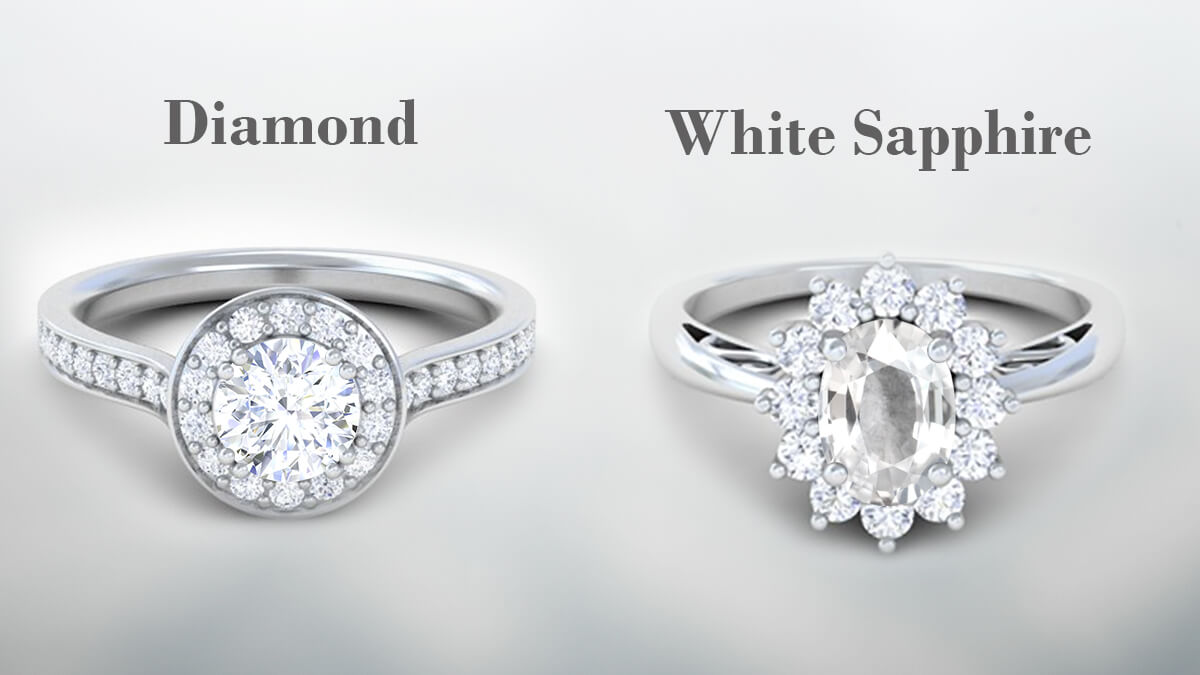
When it comes to choosing between gemstones for engagement rings or fine jewelry, white sapphire vs diamond is a debate that often comes up. Both gemstones have their own distinct qualities and appeal, making it a tough decision for many. In this article, we’ll delve into the key differences between white sapphire and diamond to help you make an informed choice based on your preferences, budget, and style.
Table of Contents
- 1. What Is the Difference Between White Sapphire and Diamond?
- 2. Durability: Which Is Harder?
- 3. Brilliance and Sparkle: How Do They Compare?
- 4. Color: Is There a Noticeable Difference?
- 5. Price: Which Offers Better Value for Money?
- 6. Ethical Considerations: How Do They Stack Up?
- 7. Which Gemstone Is Right for You?
1. What Is the Difference Between White Sapphire and Diamond?
At first glance, both white sapphire and diamond may look quite similar due to their clear and sparkling appearance. However, the main difference between white sapphire vs diamond lies in their composition. Diamonds are made of carbon and are formed under intense pressure and heat deep within the Earth’s mantle. In contrast, white sapphires are a variety of corundum, composed of aluminum oxide. While both gemstones can offer brilliance and shine, their chemical structures give them vastly different properties.
2. Durability: Which Is Harder?
One of the most important factors to consider when comparing white sapphire vs diamond is durability. Diamonds score a perfect 10 on the Mohs scale of hardness, making them the hardest naturally occurring substance on Earth. This makes diamonds incredibly resistant to scratches and wear, which is why they are often chosen for engagement rings intended to last a lifetime.
White sapphires, on the other hand, rank 9 on the Mohs scale, making them very durable but slightly more prone to scratches and abrasions than diamonds. If durability is a top priority, the white sapphire vs diamond comparison would lean in favor of the diamond, especially for everyday wear.
3. Brilliance and Sparkle: How Do They Compare?
When it comes to brilliance and sparkle, diamonds are known for their unmatched ability to refract light. Diamonds have a high refractive index, which means they bend light in such a way that creates their signature fire and brilliance. This is one reason why diamonds are so highly valued in the jewelry world.
White sapphires, however, have a lower refractive index than diamonds, which results in a different kind of sparkle. In the white sapphire vs diamond debate, sapphires are often seen as having a more muted brilliance. While they still offer a beautiful shine, they tend to reflect more white light than the colored flashes seen in diamonds.
4. Color: Is There a Noticeable Difference?
Both white sapphire and diamond are known for their clear appearance, but when you compare white sapphire vs diamond, there are subtle differences in their color tones. Diamonds, especially high-quality ones, are often graded on a color scale that ranges from colorless to light yellow or brown. A truly colorless diamond is rare and commands a premium price.
White sapphires, on the other hand, tend to have a slightly cloudy or milky appearance compared to diamonds. In the white sapphire vs diamond choice, those who prefer a crystal-clear, colorless gem may lean towards lab created diamonds, while those who don’t mind a bit of cloudiness may find white sapphires to be a more budget-friendly alternative.
5. Price: Which Offers Better Value for Money?
One of the most significant differences when choosing between white sapphire vs diamond is the cost. Diamonds, due to their rarity and demand, are far more expensive than white sapphires. Even small diamonds can command high prices, especially if they are of exceptional quality in terms of cut, clarity, and color.
White sapphires, on the other hand, offer a more affordable option without sacrificing too much in terms of beauty and durability. For those on a budget, the white sapphire vs diamond debate often tips in favor of white sapphire as it offers a similar look to diamond at a fraction of the cost.
6. Ethical Considerations: How Do They Stack Up?
In recent years, the ethical sourcing of gemstones has become an important consideration for many buyers. The diamond industry, particularly with concerns about “blood diamonds” or conflict diamonds, has faced scrutiny. While there are measures in place like the Kimberley Process to ensure diamonds are ethically sourced, the white sapphire vs diamond debate also brings white sapphires into focus as an ethical alternative.
White sapphires are often considered a more ethically sound choice because they are generally easier to source and don’t have as much history of conflict. If ethical concerns play a significant role in your decision-making process, white sapphires may have an edge in the white sapphire vs diamond debate.
7. Which Gemstone Is Right for You?
Ultimately, the choice between white sapphire vs diamond comes down to personal preference and priorities. If you’re looking for a gemstone that offers unparalleled brilliance, hardness, and prestige, a diamond may be worth the investment. However, if you’re on a budget or prefer a more ethical option, a white sapphire can still provide beauty and durability without breaking the bank.
The white sapphire vs diamond decision is one that involves weighing the factors of durability, brilliance, price, and personal values. Either way, both gemstones are beautiful and can make stunning additions to any jewelry collection.

